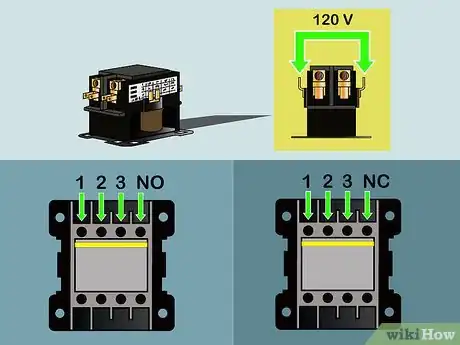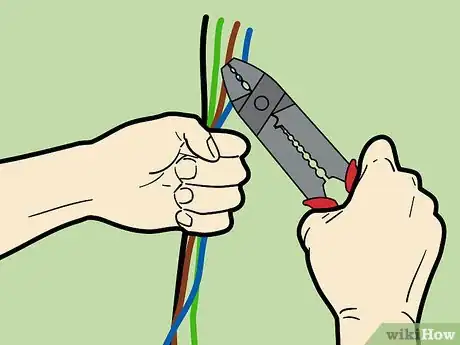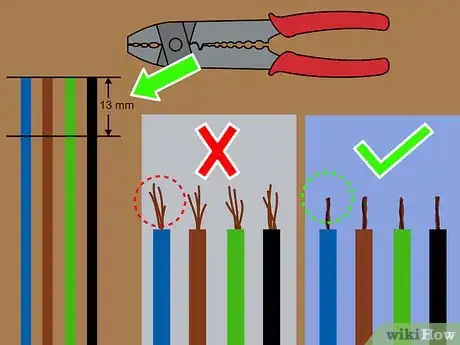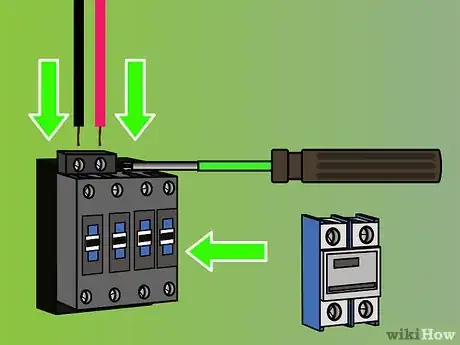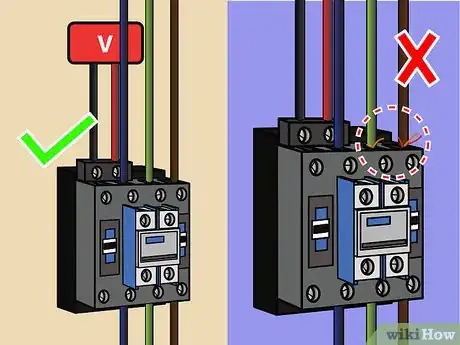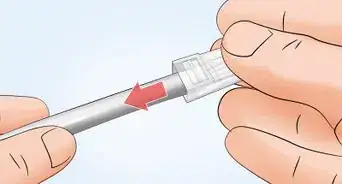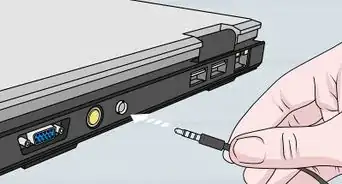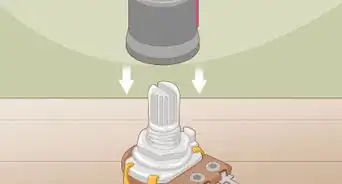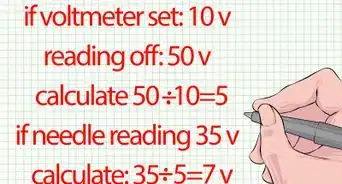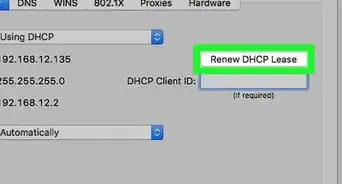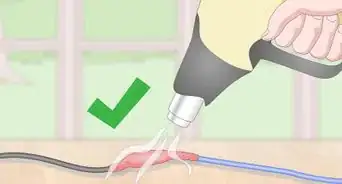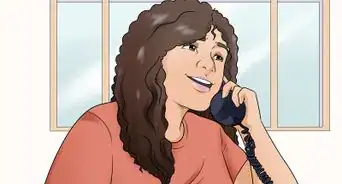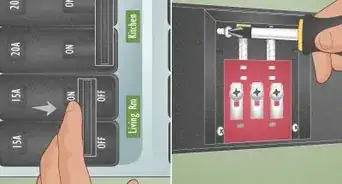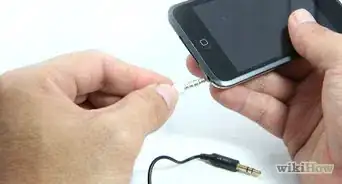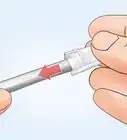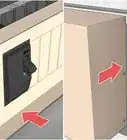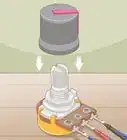This article was co-authored by Ricardo Mitchell. Ricardo Mitchell is the CEO of CN Coterie, a fully licensed and insured Lead EPA (Environmental Protection Agency) Certified construction company located in Manhattan, New York. CN Coterie specializes in full home renovation, electrical, plumbing, carpentry, cabinetry, furniture restoration, OATH/ECB (Office of Administrative Trials and Hearings/Environmental Control Board) violations removal, and DOB (Department of Buildings) violations removal. Ricardo has over 10 years of electrical and construction experience and his partners have over 30 years of relevant experience.
This article has been viewed 432,685 times.
Many large pieces of equipment are powered directly from high voltage lines. These lines far exceed the 120 volts AC standard in most homes. 240 volts AC and 480 volts AC are commonly used for these large pieces of equipment, such as motors, industrial machines, and large household appliances like washers and dryers. These voltages must be electrically isolated from the standard 120 volts AC. Contactors are used to provide this isolation. Contactors use 120 volt standard power to energize a magnetic coil, which causes a set of internal contacts to close and provide higher power to the equipment. Use these tips to learn how to wire a contactor.
Steps
-
1Acquire the contactor. Make sure that the contacts of the contactor are rated in both voltage and current to handle the expected load that will be required by the equipment being powered. Contactors are available from building and construction supply stores, as well as some larger hardware stores.
-
2Study the contactor manufacturer information. The manufacturer information will identify the 2 input pins for 120 volts AC control. The may be 2 or more sets of output contacts identified. These contacts may be indicated on the label as normally open (NO) and normally closed (NC). These contacts also may be shown as a drawing of a line from 1 contact ending in a dot (the NC contact) and another line from another contact that is near the dot, but does not touch the dot (the NO contact.)[1]Advertisement
-
3Check for an auxiliary output contact. Some contactors provide an auxiliary output contact as a signal to the isolated part of the circuit that the contactor has been energized. This auxiliary contact will not be rated at the higher voltage. Instead, it should be rated at 120 volts AC.
-
4Route the wires. Remove all power to the wires. Run all input and output wires to the contactor. These wires should be rated in the manufacturer information. Use wire strippers to cut excess length off of the ends of the wire, making sure that the wires are long enough to reach the intended contact. Wire strippers are available at hardware stores and electric supply stores.
-
5Strip the wires. Use the wire strippers to strip a half inch (13 mm) from the ends of each wire. If the wire is stranded, twist the exposed wire to ensure that no strands are left hanging. Stray strands may make unintended contact with a piece of the equipment and cause damage.
-
6Wire the inputs and the auxiliary contacts. Use a screwdriver to loosen the holding screws in the contact blocks for the wires. Insert the wires only so far that no insulation is pushed into the contact area of the block. Make sure that no stray strands are jutting out from the contact block. Tighten the screws on the contact blocks.
-
7Energize the contactor. Apply the control voltage to the input. Listen for the contactor to click as it engages. De-energize the contactor.
-
8Connect the outputs. Put the stripped end of each wire into the appropriate contact block after loosening the screw of the block. Make sure that no stray strands of wire are jutting from the contact blocks. Tighten down the screws of the contact blocks.
Expert Q&A
-
QuestionMy contactor doesn't really match up with the illustrations? Will this still work?
 Ricardo MitchellRicardo Mitchell is the CEO of CN Coterie, a fully licensed and insured Lead EPA (Environmental Protection Agency) Certified construction company located in Manhattan, New York. CN Coterie specializes in full home renovation, electrical, plumbing, carpentry, cabinetry, furniture restoration, OATH/ECB (Office of Administrative Trials and Hearings/Environmental Control Board) violations removal, and DOB (Department of Buildings) violations removal. Ricardo has over 10 years of electrical and construction experience and his partners have over 30 years of relevant experience.
Ricardo MitchellRicardo Mitchell is the CEO of CN Coterie, a fully licensed and insured Lead EPA (Environmental Protection Agency) Certified construction company located in Manhattan, New York. CN Coterie specializes in full home renovation, electrical, plumbing, carpentry, cabinetry, furniture restoration, OATH/ECB (Office of Administrative Trials and Hearings/Environmental Control Board) violations removal, and DOB (Department of Buildings) violations removal. Ricardo has over 10 years of electrical and construction experience and his partners have over 30 years of relevant experience.
Electrician & Construction Professional, CN Coterie There are all different kinds of contactors out there, and they're all wired differently. Consult the diagram that came with your contactor and follow their instructions.
There are all different kinds of contactors out there, and they're all wired differently. Consult the diagram that came with your contactor and follow their instructions. -
QuestionWhat are the letters on the conductor?
 Ricardo MitchellRicardo Mitchell is the CEO of CN Coterie, a fully licensed and insured Lead EPA (Environmental Protection Agency) Certified construction company located in Manhattan, New York. CN Coterie specializes in full home renovation, electrical, plumbing, carpentry, cabinetry, furniture restoration, OATH/ECB (Office of Administrative Trials and Hearings/Environmental Control Board) violations removal, and DOB (Department of Buildings) violations removal. Ricardo has over 10 years of electrical and construction experience and his partners have over 30 years of relevant experience.
Ricardo MitchellRicardo Mitchell is the CEO of CN Coterie, a fully licensed and insured Lead EPA (Environmental Protection Agency) Certified construction company located in Manhattan, New York. CN Coterie specializes in full home renovation, electrical, plumbing, carpentry, cabinetry, furniture restoration, OATH/ECB (Office of Administrative Trials and Hearings/Environmental Control Board) violations removal, and DOB (Department of Buildings) violations removal. Ricardo has over 10 years of electrical and construction experience and his partners have over 30 years of relevant experience.
Electrician & Construction Professional, CN Coterie Most conductors label the terminals with letters like L, N, E, A1, A2, L, and P. Those correspond with the letters on the diagram that came with your contactor. It should make it a lot easier to wire everything together.
Most conductors label the terminals with letters like L, N, E, A1, A2, L, and P. Those correspond with the letters on the diagram that came with your contactor. It should make it a lot easier to wire everything together. -
QuestionWhat does 'loop' mean?
 Community AnswerA loop is a fastener consisting of a ring that protects the inside surface of a small hole.
Community AnswerA loop is a fastener consisting of a ring that protects the inside surface of a small hole.
Warnings
- All voltages used for a contactor, including the 120 volts AC control voltage, are potentially fatal. Make sure that all power is turned off before any work is done on a contactor.⧼thumbs_response⧽
Things You'll Need
- Contactor
- Wire strippers
- Screwdriver
- Wire
References
- ↑ Ricardo Mitchell. Electrician Professional, CN Coterie. Expert Interview. 6 May 2020.
- https://www.allaboutcircuits.com/textbook/digital/chpt-5/contactors/

